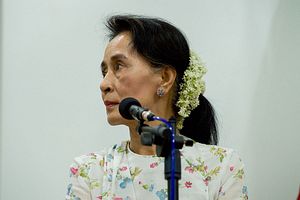Efforts by the Myanmar government and its leader Aung San Suu Kyi to find a lasting peace among long-warring rebel groups have stumbled, and perhaps predictably so given the magnitude of the challenge.
Fighting continues to erupt in the north and east of the country amid calls for an investigation into military excesses. This is part of a broader reality where, despite the historic victory of Suu Kyi’s opposition National League for Democracy (NLD) in the 2015 elections, the military still retains control of the country and continues to frustrate progress on the peace process.
Meanwhile, Suu Kyi’s 21st century Panglong Conference, first held last August with a second round held this May, has failed to bring together warring factions in the negotiations to achieve anything close to successful outcome.
To be sure, that goal might be difficult given the disparate interests that have to be satisfied. It is a situation not made any easier by the fact that not all of the ethnic militias buy into the government’s nationwide ceasefire agreement (NCA).
A case in point is the fact that seven ethnic armed militias – including the Kachin Independence Army (KIA), the Ta’ang National Liberation Army (TNLA), the Myanmar National Democratic Alliance Army (MNDAA) — had joined up with the United Wa State Army (UWSA), who are leading an alliance and are demanding the government treats them as a single entity, as opposed to negotiating individually.
China’s role has predictably served as an additional complicating factor. Beijing has strong ties to the heavily-armed UWSA, whose influence within the peace process has only grown of late. And while Beijing publicly says that it merely supports Myanmar’s peace process, in reality the Chinese role is much more active, with the country applying pressure on militias as well as the government to get outcomes in its favor on the one hand while continuing to contribute to the conflict by arming the group and its allies on the other.
“An immediate end to Myanmar’s long-running civil war is in many ways not in China’s strategic interest,” Myanmar expert Bertil Lintner wrote recently in Asia Times, noting that Beijing has clearly emerged as having a “leading role” in the peace process.
“[A] prolonged peace process would give China a chance to assert its mediating role and pressure Myanmar authorities to reciprocate through concessions and privileges, including Beijing’s desired strategic access to the Indian Ocean in western Rakhine state,” Lintner added.
Meanwhile, violence and atrocities continue to be documented. In Shan State, a video surfaced last month showing soldiers kicking, beating, and threatening to kill six captives. In Kachin State in the country’s northeast, thousands have fled mining villages where the Tatmadaw has issued deadlines to locals to leave or risk being classified as an “insurgent.”
Bishop Raymond Sumlut Gam of Banmaw, who is based in Kachin State, recently told ucanews.com that the situation of people displaced by fighting in Kachin State is worsening and more humanitarian assistance from the international community is needed. He also said the number of people fleeing fighting between the KIA and Tatmadaw is increasing.
“With renewed clashes, thousands of people have fled their homes. The situation in Kachin appears to be worsening,” he said as a fresh round of fighting erupted near the mining areas around Tanai township.
“The church needs help from the international community as the displaced people can’t go back to their homes,” Bishop Gam, an ethnic Kachin, said. “Sporadic fighting continues and peace remains elusive”.
Human rights groups want such incidents to be halted and addressed. But while the government has said that it will look into them, its clumsy efforts in defining its relationship with minorities would seem to compromise any probe from the start.
Meanwhile, few longtime observers believe that the military is really interested in seeing a lasting peace deal stick, as opposed to wresting control of the country’s territory and suppressing insurgency, no matter the cost.
Luke Hunt can be followed on Twitter @lukeanthonyhunt

































